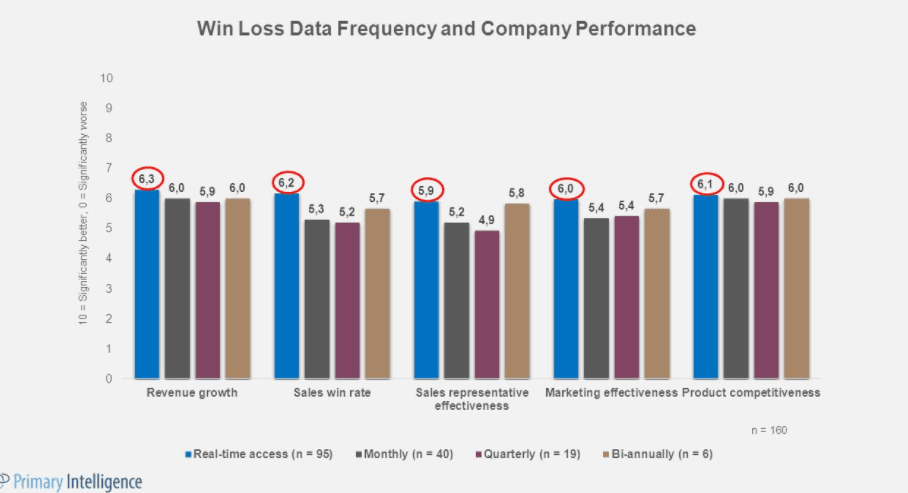How to Win in Conducting Win Loss Analysis: a Guide for Market Researchers
It is no secret that businesses around the world are becoming increasingly customer-centric. What customers want and perhaps, more importantly, don’t want dominates the mandate of CRM programs. Providing an enhanced consumer experience is one of the key steps of a successful customer retention strategy. But before you get to that stage of serving customers, you have to cross the first hurdle of securing customers.

Nov 19 2021 ● 10 min read

The sales funnel of any successful business is ideally a structured process that leaves little room for guesswork. Businesses need to know the number of prospects they have, how these are being pursued, and the likelihood of their conversion. It doesn’t just stop here. Sales teams use a win-loss analysis to find out why a prospect bought your product and also why they didn’t.
The win-loss analysis is a necessary course for any business that wants to optimize its sales, marketing, and project management systems and effectively improve its gross profit margin. A win-loss analysis provides valuable insights into how your business is positioned in the competitive landscape.
So what are some of these insights?
- How consumers view your product or service
- Comparison with your top competitor(s) and what gives their product an edge over yours (for example - any incentives or discounts offered to consumers)
- Which aspects of your USP are most attractive to prospects
How Do You Conduct Win-Loss Analysis?
Win-loss analysis is conducted differently by different companies according to their specific requirements - the specific metrics they want to study. For example, a startup may want to conduct a win-loss analysis by analyzing marketing performance against a particular competitor. For example, a startup may want to conduct a win-loss analysis by analyzing marketing performance against a particular competitor, which would have led to startup growth. A more established company on the other hand may want to evaluate its performance against multiple competitors and variables.
For the most part, however, win-loss analysis is a three-step process that involves:
- Data collection
- Analyzing data
- Taking action
Data Collection
The first step in conducting a win-loss analysis is collecting relevant data. This data can be both qualitative and quantitative and is ideally a combination of both types. Two main types of quantitative data while conducting a win-loss analysis are win rate and win/loss ratio. This data tells you exactly where you stand and which areas need improvement.
Win rate refers to the rate at which opportunities are turned into customers and is calculated by dividing the number of opportunities won by the total opportunities. Win/Loss ratio on the other hand refers to the ratio of opportunities won to lost. This is calculated by dividing opportunities won by opportunities lost. Both these quantitative data sets provide a blueprint for evaluating the performance of sales teams and can be done both at a macro and micro level, by industry, or by personas.
At the start of your data collection, you should first determine what kind of data you’re looking for and which variables you want to track your performance against. You could choose industry-specific data or data in relation to a particular competitor. For example, if you’re in the communication business, you may want data on how sales of your non-fixed VoIP compare to your competitors.
Common sources for data collection include sales data, marketing data, customer feedback data, and firmographic data.
Sales teams usually maintain detailed records in CRM systems about the particulars of each opportunity. You can get valuable information about specific cases, their pain points, competitor position, and more. Ideally, your CRM should have a field for a win/loss reason that sales teams need to fill in for each time they win or lose a sale.
Customer feedback is an invaluable source to gather insights on what makes or breaks a deal. Interviews and surveys with customers and prospects allow you to ask specific questions that aren’t always addressed in a sales rep’s report.
Firmographic data refers to the different set of characteristics of a business that can be used to categorize different market segments. Firmographic data may include a company’s annual revenue, number of employees, type of business, and more.
Marketing data can provide useful information on how prospects engage with your company’s content marketing programs. You can use your CRM tools, content management system and any other marketing automation tools to categorize opportunities.
Analyzing Data
Once you’ve collected all the relevant data, the next step is to compile and then analyze it. A good rule of thumb for win-loss data analysis is to start with the big picture such as the macro metrics like your overall win/loss ratio and your competitive win rate. This shows you where you stand and contextualizes all other data.
For example, if you find that your win/loss ratio is 45% and your competitive win rate against competitor A is 75%, you can tell that your sales have performed better than competitor A.
A crucial source of qualitative data analysis is the feedback or interviews you conduct with prospects. When you ask focused questions, you get specific answers and can subsequently take focused action. While interviewing prospects, don’t be afraid of negative feedback. Even if you don’t like what you hear, this is the information you need to make improvements.
For example, if you asked prospects what made them choose your competitor’s call center technology over yours, you could likely get very specific reasons like better cost-effectiveness or better adoption. You can analyze this qualitative data to both understand your pain points and see exactly where your competitors have an edge over you.Another way to analyze win-loss data is by lead source. Not all lead sources convert to customers at the same rate. By analyzing data from your overall win rate and win/loss ratio by lead source, you can determine what type of leads convert to customers and which don’t. Qualitative data analysis also evaluates the way prospects respond to different marketing personas.
Different prospects engage and respond differently to your sales and marketing drives. Personas are a significant aspect of conversion rate marketing as they allow marketers to address prospects in a way that resonates with them. The win/loss ratio calculated by persona tells you how your marketing approach is faring with prospects.
Taking Action
The ultimate purpose of collecting and analyzing data is to take some actionable steps in improving your business processes to optimize conversions. Again, different companies take different approaches in this final stage of their win-loss analysis. Generally speaking though, by this stage you have a fair idea of what’s working and what’s not.
Some companies use their findings to narrow their focus. For example, a company dealing in cloud-based VoIP finds that its overall win/loss ratio is 45% but that figure falls to 10% against prospects from the hospitality sector. It will be for the company to decide whether they want to incur the opportunity cost of pursuing future leads from this sector or to avoid it altogether.
Another common finding from win-loss analyses is the failure of your marketing personas to resonate with prospects. In this case, you need to revisit and restructure your personas. For example - if your sales team is hitting roadblocks while pitching virtual numbers to marketing leaders, maybe they are the wrong people to pitch to. Sales leaders may be the right people to present your product to.

In some cases, it’s possible that your team is presenting to both sales and marketing leaders but struggling to connect with one group because they don’t have enough research on them and so can’t click on a human level. Either way, the logical next course of action will be to amend your personas.
One of the first things some businesses do after analyzing and collating their data is sharing the results with their Sales, Marketing and Customer Success teams. Sharing your win-loss analysis on your company’s task management system allows teams to go over these findings together and brainstorm about the next course of action.
Sometimes your findings can prompt a stark change in your policy or business decision. For example - if your findings suggest that prospects are choosing your competitor’s product over better pricing or incentives, you may want to adjust your own pricing or introduce a product that has a better price match with your competitor’s.
To Sum Up
The way to stay ahead of the game when you’re running a business is to watch, learn and improve. You can’t expect to have a 100% success rate with every opportunity that you pursue.
But knowing what customers want and identifying the gap between their wants and what you’re providing is key to actually closing that gap.
Published on Nov 19 2021

WRITTEN BY
Indrė Jankutė-CarmaciuIndrė is a copywriter at Whatagraph with extensive experience in search engine optimization and public relations. She holds a degree in International Relations, while her professional background includes different marketing and advertising niches. She manages to merge marketing strategy and public speaking while educating readers on how to automate their businesses.